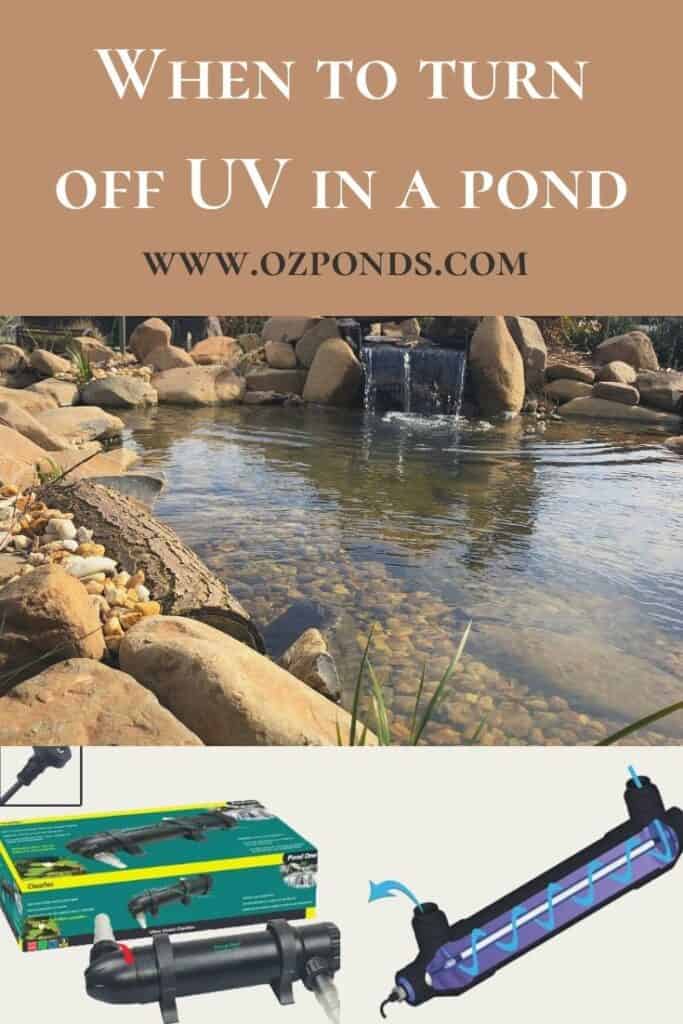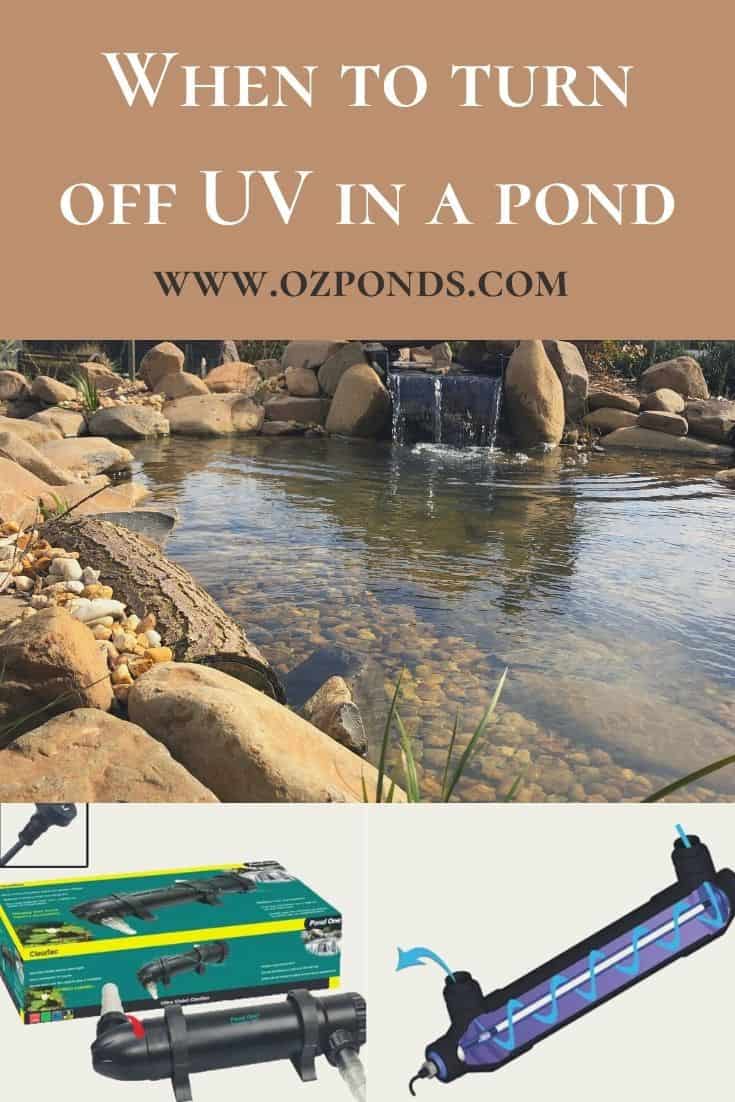It is most common to turn a pond UV clarifier off during winter.
During the winter the fish are not as active. They aren’t eating and the sun isn’t as intense.
Because of these factors green water is less likely to be a problem over winter.
Turning the UV off when not needed can save you money.
Another common reason to turn it off over winter is to prevent it becoming damaged if the pipes freeze.
Most people who run a UV will turn it off over winter. Give it a check over, maybe replace the bulb and bring it out again in spring.
How a pond UV clarifier works
A UV clarifier is just that a clarifier. It’s sole purpose is too clear up green water. It is not a filter! It won’t remove fish waste or other small particles.
UV clarifiers use a UV light to break apart single-celled algae. That is the algae that turns a pond green. They are very effective at clearing green water.
The UV clarifiers is connected to the pump by a pipe. The pump sucks up the green water, passes it through the UV light and clean water is returned to the pond.
Many all-in-one filters and canister style filters will include a UV clarifier.
If you have a seperate filter the UV should always be positioned before the filter.
What size UV clarifier to buy
The flow rate of the pump will determine what UV clarifier you buy.
All UV clarifiers have an optimal flow rate at which they are most effective.
If the light isn’t bright enough to penetrate through the water it will be ineffective.
Also trying to force too much flow through a undersized UV is going to put backward pressure on the pond pump which will impact the lifespan of the pump.
The more flow that passes through the brighter the light needs to be. This will increase running costs.
How much does it cost to run a pond UV
The brighter the light the more the UV clarifier will cost to run.
Like all electrical equipment the amount of watts consumed determines how much a UV clarifier will cost to run.
I calculate the cost by multiplying the cost of electricity per kilowatt by the amount of kilowatts the UV clarifier uses.
Remember there is 1000 watts in a kilowatt so first you divide the watts by 1000. This gives you the kilowatts the UV clarifier uses.
Electricity rates can vary widely. Here in Australia we pay quite a lot per kilowatt.
Below is a table that will give you a quick guide as to how much it costs to run a UV clarifier per day.
| UV Watts | Cost of electricity | Cost to run UV/ per day | Cost to run UV per year (365 days) |
| 5 watts | $0.25 per kWh | 3 cents per day | $10.95 per year |
| 5 watts | $0.15 per kWh | 1.8 cents per day | $6.57 per year |
| 20 watts | $0.25 per kWh | 12 cents per day | $43.80 per year |
| 20 watts | $0.15 per kWh | 7.2 cents per day | $26.28 per year |
| 100 watts | $0.25 per kWh | 60 cents per day | $219.00 per year |
| 100 watts | $0.15 per kWh | 36 cents per day | $131.40 per year |
As you can see the there isn’t much to save on a small unit. But as you get up to the larger UV clarifiers you can save quite a bit by turning them off over winter.
Alternatives to a pond UV
I personally said goodbye to my UV clarifiers. Don’t get me wrong they are incredibly effective at clearing up green water.
But there is a more natural way!
I found that green water is a result of inadequate biological filtration. More specifically inadequate amounts of nitrifying bacteria.
If you are new to ponds and fish keeping you might be wondering what is a biological filter and what are nitrifying bacteria??
If that’s you check out my article on the nitrogen cycle in a pond. It will help you understand exactly how to keep your pond clean and healthy.
There are plenty of ways to boost the populations of nitrifying bacteria in a pond. All the bacteria need are wet surfaces.
A bare liner pond has much less wet surface area than a pond with rocks and pebbles.
Sometimes you might not want to add rocks and pebbles to the pond, many people fear it will make the pond harder to clean.
I understand. Adding a bog filters is the solution. This allows plenty of surface area for nitrifying bacteria.
Here is a video showing what happened when I added a bog filter to my bare liner fish pond.
Now the only biological filter I use on all my ponds is a bog filter. If you want to learn how I build them check out my DIY pond filter article.
A bog filter can be scaled up or down to any sized pond. I use them on small wine barrel patio ponds and my large ecosystem native fish ponds.
The water remains crystal clear all year and it costs nothing extra to run. Just the cost of the pump.
Speaking of the cost of running the pump. Bog filters are most effective with slow flow rates. That means you don’t need to have a huge pump to filter the pond. To learn more about bog filter flow rates, I have an article;)
Hopefully this article has been helpful.
If so you might like to sign up to my mailing list for pond saving tips and discounts on pond related equipment. If so click the button below.
Thanks for reading.


